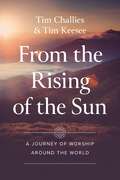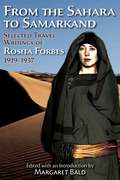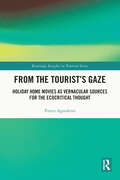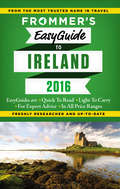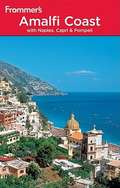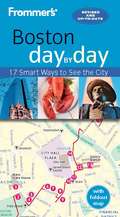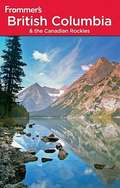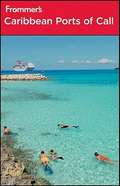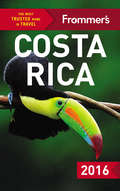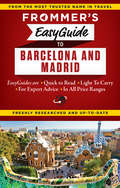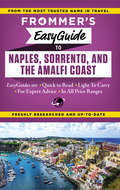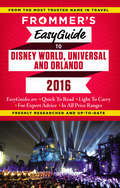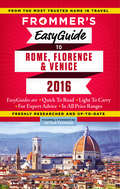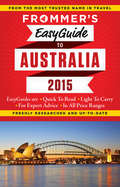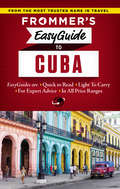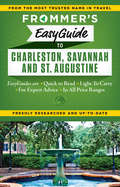- Table View
- List View
From the Mull to the Cape: A Gentle Bike Ride on the Edge of Wilderness
by Richard GuiseRichard Guise yearned to take on a physical challenge, so he set off for an adventure on a 586-mile bike ride through the Highlands of Scotland. Guise discovers the little-known history of this unique part of Britain, picking up on the oddities and strange beauty of the place and telling it all with gentle humour.
From the Mull to the Cape: A Gentle Bike Ride on the Edge of Wilderness
by Richard GuiseRichard Guise yearned to take on a physical challenge, so he set off for an adventure on a 586-mile bike ride through the Highlands of Scotland. Guise discovers the little-known history of this unique part of Britain, picking up on the oddities and strange beauty of the place and telling it all with gentle humour.
From the Oven to the Table: Simple dishes that look after themselves
by Diana HenryTHE SUNDAY TIMES BESTSELLER'For bung-it-in-the-oven cooks everywhere, this is a must-have book: Diana Henry has a genius for flavour.' - Nigella LawsonWhether you're short of time or just prefer to keep things simple, From the Oven to the Table shows how the oven can do much of the work that goes into making great food. Diana Henry's favourite way to cook is to throw ingredients into a dish or roasting tin, slide them in the oven and let the heat behind that closed door transform them into golden, burnished meals. Most of the easy-going recipes in this wonderfully varied collection are cooked in one dish; some are ideas for simple accompaniments that can be cooked on another shelf at the same time. From quick after-work suppers to feasts for friends, the dishes are vibrant and modern and focus on grains, pulses and vegetables as much as meat and fish. With recipes such as Chicken Thighs with Miso, Sweet Potatoes & Spring Onions, Roast Indian-spiced Vegetables with Lime-Coriander Butter, and Roast Stone Fruit with Almond and Orange Flower Crumbs, Diana shows how the oven is the most useful bit of kit you have in your kitchen. Praise for How to Eat a Peach:'This is an extraordinary piece of food writing, pitch perfect in every way. I couldn't love anyone who didn't love this book.' - Nigella Lawson'...her best yet...superb menus evoking place and occasion with consummate elegance' - Financial TimesFood Book of the Year at the André Simon Food & Drink Book Awards 2019
From the Oven to the Table: Simple dishes that look after themselves
by Diana HenryTHE SUNDAY TIMES BESTSELLER'For bung-it-in-the-oven cooks everywhere, this is a must-have book: Diana Henry has a genius for flavour.' - Nigella LawsonWhether you're short of time or just prefer to keep things simple, From the Oven to the Table shows how the oven can do much of the work that goes into making great food. Diana Henry's favourite way to cook is to throw ingredients into a dish or roasting tin, slide them in the oven and let the heat behind that closed door transform them into golden, burnished meals. Most of the easy-going recipes in this wonderfully varied collection are cooked in one dish; some are ideas for simple accompaniments that can be cooked on another shelf at the same time. From quick after-work suppers to feasts for friends, the dishes are vibrant and modern and focus on grains, pulses and vegetables as much as meat and fish. With recipes such as Chicken Thighs with Miso, Sweet Potatoes & Spring Onions, Roast Indian-spiced Vegetables with Lime-Coriander Butter, and Roast Stone Fruit with Almond and Orange Flower Crumbs, Diana shows how the oven is the most useful bit of kit you have in your kitchen. Praise for How to Eat a Peach:'This is an extraordinary piece of food writing, pitch perfect in every way. I couldn't love anyone who didn't love this book.' - Nigella Lawson'...her best yet...superb menus evoking place and occasion with consummate elegance' - Financial TimesFood Book of the Year at the André Simon Food & Drink Book Awards 2019
From the Oven to the Table: Simple dishes that look after themselves
by Diana HenryThe beautiful new edition of Diana Henry's classic Crazy Water, Pickled Lemons is OUT NOW***'For bung-it-in-the-oven cooks everywhere, this is a must-have book: Diana Henry has a genius for flavour.' - Nigella Lawson-'This might be Henry's most useful book yet, which is saying something.' - The Sunday Times -'The shining star is Diana Henry's From the Oven to the Table, in which she faultlessly delivers highly achievable, boldly flavoured dishes.' - Meera Sodha, the Guardian-'A new cookbook from Diana Henry is always a reason to celebrate and From the Oven to the Table is no exception.' - Independent -'There's so much to love about the latest from the Sunday Telegraph writer. Its great strength lies in updating and upgrading food you'll want to produce with a flourish. Deliciously photographed, too.' - Allan Jenkins, Observer Food Monthly-'Diana Henry is one of Britain's best cookery writers: her recipes are instantly appealing and she's the most elegant of writers. (...) Packed with hearty, highly flavoured dishes, it's the perfect winter cookbook for those days when you need sustenance without putting in too much effort.' - Daily Mail-'Of all the new cookbooks that came into my house this year, this is the one that has been used most often.' - Sunday Times Ireland-'The queen of simple, delicious comfort food is at her greatest in [this] warming collection.' The Independent-'Her most simply satisfying book yet? A must-own.' - Delicious.magazine-'I'm not quite sure how Diana Henry does it but every book she writes is a winner; practical, enticing and evocative. And the recipes always work. This one may seem as simple as it gets (one-pot or tray cooking) but it never ceases to delight.' - Tom Parker Bowles, the Mail on Sunday-Diana Henry's favourite way to cook is to throw ingredients into a dish or roasting tin, slide them in the oven and let the heat behind that closed door transform them into golden, burnished meals. Most of the easy-going recipes in this wonderfully varied collection are cooked in one dish; some are ideas for simple accompaniments that can be cooked on another shelf at the same time. From quick after-work suppers to feasts for friends, the dishes are vibrant and modern and focus on grains, pulses and vegetables as much as meat and fish. With recipes such as Chicken Thighs with Miso, Sweet Potatoes & Spring Onions, Roast Indian-spiced Vegetables with Lime-Coriander Butter, and Roast Stone Fruit with Almond and Orange Flower Crumbs, Diana shows how the oven is the most useful bit of kit you have in your kitchen. Praise for How to Eat a Peach:'This is an extraordinary piece of food writing, pitch perfect in every way. I couldn't love anyone who didn't love this book.' - Nigella Lawson'...her best yet...superb menus evoking place and occasion with consummate elegance' - Financial Times
From the Rising of the Sun: A Journey of Worship Around the World
by Tim Challies Tim KeeseeA unique view of Christian worship around the world (with free streaming video!)Get ready to travel the globe and experience the beauty of Christian worship like never before. From the Rising of the Sun takes you on an unforgettable journey, showcasing how believers from all corners of the earth praise God in ways that are consistent with Scripture but faithful to the local language, customs, and culture. And here's the best part--this book includes a code for free streaming access to a 12-episode video series, so you can witness these incredible moments of worship for yourself!Starting in Fiji, you'll follow the sun as it rises and sets, moving through Australia, Asia, Europe, Africa, the Americas, and beyond. Along the way, you'll meet brothers and sisters in Christ who worship amidst stunning landscapes, vibrant cities, and remote jungles. From the hymns sung in Korea's bustling metropolises to the prayers offered in Zambia's open plains, you'll see and feel the unity and diversity of God's people.Each chapter invites you into the heart of a country or region and includes:Beautiful descriptions of diverse worship.Fascinating travel anecdotes.Meaningful Bible studies.Reflections on worship.Discussion questions.A video session to enhance your experience.Whether you're passionate about global missions, fascinated by cultural diversity, or simply looking to deepen your understanding of worship, From the Rising of the Sun will inspire and uplift you. Take this unique opportunity to celebrate God's glory through the voices of believers worldwide, and see how the Gospel unites us all.Join this global symphony and experience a taste of Revelation 5:9 as we, along with our brothers and sisters worldwide, worship the One who by His blood has "ransomed people for God from every tribe and language and people and nation."
From the Sahara to Samarkand: Selected Travel Writings of Rosita Forbes 1919-1937
by Rosita ForbesThe extraordinary Rosita Forbes explored the Libyan desert, sailed across the Red Sea, and trekked more than a thousand miles into remote Abyssinia. She wrote some thirty books about these and other journeys, as well as biographies, histories, novels, and memoirs. She was a widely published journalist and commentator on international affairs, a popular lecturer, and a documentary filmmaker. Her story deserves to be retold and her writing discovered by a new generation.
From the Tourist’s Gaze: Holiday Home Movies as Vernacular Sources for the Ecocritical Thought (Routledge Insights in Tourism Series)
by Pietro AgnolettoFrom the Tourist’s Gaze bridges environmental humanities and amateur cinema studies, exploring tourism-induced environmental issues through the visual representations created by tourists themselves.The protagonists of the book are families from North-West Italy and their holiday films, captured during their holidays in the Ligurian Riviera. The timeframe spans between the 1950s and 1970s, the so-called Italian “economic miracle”, a period in which Italy experienced an extraordinary and rapid economic growth and, consequentially, a rise in living standards, including tourism and film cameras accessibility. Radical environmental transformations such as the industrialization and cementing of spaces, or the conversion of entire coastlines into territories equipped to receive masses of tourists, were just one of the consequences, studied from a myriad of sources, but never through amateur films. The most illustrative case is the Ligurian Riviera, which has been regarded as an example of land consumption since those contemporary years. Despite being centered on a specific case study, readers will be equipped with practical tools to enhance their study of historical amateur films. These tools are introduced through innovative methodological approaches to archival research and visual analysis. The results will highlight the visual imagery of mid-20th-century tourists and their perspectives on the destinations they visited, offering fresh, visually oriented insights that contribute to the field of tourism studies.As a visual journey through mid-20th century Italian tourism and its environmental narratives, it may interest cultural geographers, tourism and media scholars, and the broader group of environmental humanists: the latter will have the opportunity to explore amateur cinema as an untapped resource for understanding cultural narratives, while amateur cinema scholars will have an example of a fresh and different approach to their subject. It can also give new insights to archivists specialized in home movies and be appealing to scholars and intellectuals interested in these topics.
Frommer' EasyGuide to Ireland 2016
by Jack JewersThough it has largely recovered from its economic crisis of 2008, Ireland's price structure is still among the most moderate in Europe, and its public is still eager to attract additional tourism. And thus they welcome the visitor with the warmest reception of perhaps any country. The author of this highly-successful guidebook is an enthusiastic observer of that country, who proposed to his Irish-American wife at a spa on the Ring of Kerry (it gets a great review in this book). His love of Ireland is shown on every page, and perhaps accounts for the large sales that this popular, perennial guide enjoys each year. Two hundred eighty-eight pages, an Easy Guide of pithy, personal recommendations.
Frommer's 99 England
by Darwin Porter Danforth PrinceLife is short. Vacations are shorter. Relax! Trust your trip to England to Frommer's. Includes planning for your trip, attractions in both cities and the countryside.
Frommer's Amalfi Coast with Naples, Capri and Pompeii, 3rd Edition
by Bruce Murphy Alessandra De RosaCompletely updated, Frommer's Amalfi Coast clues you in to the region's best experiences, from enjoying secluded beaches and fine seaside dining to exploring history, art, and archaeology. Our local authors hit all the highlights, from the ruins of Pompeii to the iconic hillside towns of Amalfi, Ravello, and Positano. They've checked out all the area's best hotels and restaurants in person, and offer authoritative, candid reviews that will help you find choices to suit your taste and budget. You'll also get up-to-the-minute coverage of shopping and nightlife; accurate maps; advice and tips on planning a successful family vacation; in-depth coverage of Naples, including a detailed walking tour, and side trips to islands like the well-known Capri as well as to undiscovered towns outside the city.
Frommer's Berlin day by day
by Donald OlsonFrommer's Berlin Day-by-Day Guide is the complete up-to-date reference for visitors who want to maximize their stay in the smartest, most time-efficient way. <P><P> This invaluable guide offers reviews on a wide array of sightseeing, lodging, shopping, dining and entertainment options in all price ranges, and also includes thematic and walking tours of the city's best-loved neighborhoods with Frommer's trademark candid and accessible expertise.
Frommer's Boston day by day
by Marie MorrisFrommer's Boston Day-by-Day Guide is the complete up-to-date reference for visitors who want to maximize their stay in the smartest, most time-efficient way. This invaluable guide offers reviews on a wide array of sightseeing, lodging, shopping, dining and entertainment options in all price ranges, and also includes thematic and walking tours of the city's best-loved neighborhoods with Frommer's trademark candid and accessible expertise.
Frommer's British Columbia and the Canadian Rockies, 6th Edition
by Bill McraeCompletely updated, this new edition of Frommer's British Columbia & the Canadian Rockies will show you the best of Vancouver, the hottest destination in North America, where you can enjoy cutting-edge Asian-fusion cuisine and experience firsthand its vibrant arts and nightlife scene. Then we'll take you into some of the most spectacular, unspoiled countryside on the continent, where you can enjoy whale watching, sea kayaking, canoeing, wildlife viewing, downhill skiing, wine tasting, hiking, biking, and more. In the Rockies, you'll get full coverage of gorgeous Banff and Jasper National Parks, and we'll also take you to the glowing glacial waters of Lake Louise. Our authors have traveled every inch of this vast region, and they've chosen the best places to stay: wilderness lodges, guest ranches, elegant B&Bs, mom-and-pop motels, secluded campgrounds, and luxury resorts. With Frommer's in hand, it's a snap to design the Canadian adventure that's right for you.
Frommer's Caribbean Ports of Call
by Christina Paulette ColónCompletely updated every other year, Frommer's Caribbean Ports of Call takes a fresh look at the most classic cruise destination. Our author, who has lived in Bonaire and Belize, and, hits all the highlights, from Cape Canaveral to Martinique. She's experienced all of the cruise lines inperson, and offers authoritative, candid reviews that will help you find the line and the itinerary that suit your tastes and budget. You'll also get up-to-the-minute coverage of shopping and nightlife in ports of embarkation as well as ports of call and in-depth coverage of local dining and excursions in various caribbean destinations. Frommer's Caribbean Ports of call offers advice on planning a successful cruise; and gives you the tools you need to experience the best of each destination you'll visit.
Frommer's Costa Rica 2015
by Eliot GreenspanWritten by an outspoken, long-time resident, Frommer's Costa Rica 2015 shows travelers how to plan and execute the adventure of a lifetime in this vibrant country. This classic Frommer's series includes exact prices; extraordinarily candid reviews of the best nature sights, restaurants, attractions, outfitters and hotels in every price range (from hostels to glamorous resorts); and dozens of detailed maps.
Frommer's Costa Rica 2016
by Eliot GreenspanNo one on earth matches the knowledge of what tourists seek and expect in Costa Rica than Frommer's author Eliot Greenspan. He not only has, over the years, written extensively about this popular Central American nation, but also operates a successful tour operation there, personally conducting many of the tours offered by his company. Costa Rica is the unchallenged star of Central American tourism, a nation that has respected and protected its environment and thus kept it inviting and memorable. The 500-some-odd pages of Frommer's Costa Rica 2016 are illustrated with colorful maps and photographs. In the back of the book is a valuable glossary of the top Spanish phrases tourists will need and use in Costa Rica.
Frommer's EasyGuide BARCELONA & MADRID
by David Lyon Patricia HarrisSpain vies with France as the most heavily-visited European nation, and Barcelona and Madrid are its two most heavily-visited cities. But while our authors are infatuated with both cities, about which they have written several earlier travel guides (and food commentaries), they also devote considerable attention to side-trips out of Madrid (to Toledo, Cuenca, Segovia, Avila, Salamanca and Zamora) and out of Barcelona (to Tarragona, Sitges and Girona), to which they returned for this new Easy Guide. The result: a surprisingly comprehensive look (in 256 pages) at many of Spain's most compelling locations, with updated and newly-researched advice for 2015 and beyond
Frommer's EasyGuide NAPLES, SORRENTO & THE AMALFI COAST
by Stephen BrewerWhen American tourists complete their first trip to Rome, Florence & Venice, their attention then invariably turns further south in Italy, to the dynamic city of Naples (along with nearby Pompeii), the colorful seaside city of Sorrento, and the enchanting Amalfi Coast alongside Capri. The number of tourists making a trip to these legendary locations is awesome. Our authors are long-recognized and well-acclaimed travel journalists, who have each devoted considerable time to formulating their personal recommendations for these major Italian destinations. Two hundred eighty-eight pages bear their travel advice.
Frommer's EasyGuide TO DISNEY WORLD, UNIVERSAL & ORLANDO
by Jason CochranIn 2014 it was named "Best Travel Guide of the Year" by the Society of American Travel Writers, a stunning accolade from the nation's most prestigious travel journalists, who find it surpasses any competing guide. Note that the book is careful not simply to review the attractions and lodgings of the Disney theme parks, but the wildly popular Universal parks (including those themed from the Harry Potter books) and the other intriguing attractions and facilities of the city of Orlando. Author Jason Cochran--Editor-in-Chief of Frommers. com--has carefully updated every mention for 2016, and is as always a superb writer and commentator. The portable Easy Guide format of 288 pages makes this easy to carry and consult.
Frommer's EasyGuide TO Rome, Florence & Venice
by Donald Strachan Stephen Keeling Eleonora BaldwinFor the first-time visitor to Italy (a giant audience), the itinerary of this Easy Guide is the classic pattern: while countless other places are almost -- we stress "almost" -- as compelling, these magical three cities overawe all others. And we've enlisted three superb researchers and writers to capture them for you. Eleonora Baldwin lives in Rome, where she is one of the city's foremost experts on local cuisine and culture. Donald Strachan, who lives most of the year in Italy, has written books and articles on Italy for more than 20 years. Stephen Keeling is an Oxford graduate who won a much-coveted journalistic prize in 2008 for his Frommer's Guide to Tuscany and Umbria. All three have teamed to prepare this revised and up-to-date guide to Italy's classic "three".
Frommer's EasyGuide To Australia
by Lee MylneThe giant continent-nation of Australia, with its English-speaking population, is currently attracting a great number of visitors from North America and Great Britain. In this newly-revised, freshly-researched guide, author Lee Mylne, who is based in Brisbane (the third most populous city in Australia), deals with the cities and areas to which most tourists go. She has been an Australian travel journalist for nearly all her working life, and has traveled to every state and territory of Australia by every means of transport. She is also a life member and past president of the Australian Society of Travel Writers.
Frommer's EasyGuide To Beijing, Shanghai & Xi'an
by Graham BondKnown for years as the sleeping giant of tourism, China has now awakened with a roar, attracting 120 million inbound tourists each year (including two and a half million Americans), and accounting for increasing sales of guidebooks to its three major attractions: Beijing, Xian and Shanghai. Our author of this 288-page guide to those three primary cities--Graham Bond--has lived in China for many years, is currently pursuing a doctorate in Chinese history, but continues to keep his touristic information up-to-date and rewarding through constant travels there. He is already the author of Frommer's Shanghai, a previously-published guidebook, and now cements his reputation as the nation's foremost authority on visits to China by American and other western travelers. The book is profusely illustrated with maps, and provides every detailed assistance on the mechanics of living in and touring China.
Frommer's EasyGuide To CUBA
by Claire BoobbyerWith widespread travel to Cuba finally permitted to Americans, a large audience will enthusiastically welcome this authoritative guide written by a leading expert in travel to the Caribbean's largest island-nation. Claire Boobbyer, a British citizen who has been spending months each year in Cuba since 1998, is a frequent speaker on Cuba to prestigious travel organizations, a featured television commentator on Cuba for the BBC, a leader of tours to Cuba for the Smithsonian and other groups, a writer on Cuba for Britain's The Telegraph and other newspapers. She has carefully designed her 288-page Easy Guide to Cuba to emphasize her choices of the best facilities and attractions for those Americans who are now able to make the trip.
Frommer's EasyGuide To Charleston, Savannah and St. Augustine
by Stephen Keeling Lesley AbravanelThese three charming Southern "capitals" (including the oldest in America) are massively popular tourist destinations because of their well-preserved architecture (capturing the ante-bellum life of the 1860s and the Spanish colonial era, in the case of St. Augustine), their active theatre scene (especially in Charleston), their numerous museums and historic homes, their remarkable restaurants, and the unique personality of their civic life and residents. You dip into an earlier era when you visit them. Our Easy Guide captures the best of their facilities and attractions in condensed form, confining its 256 pages and maps to the outstanding highlights of all three cities.



